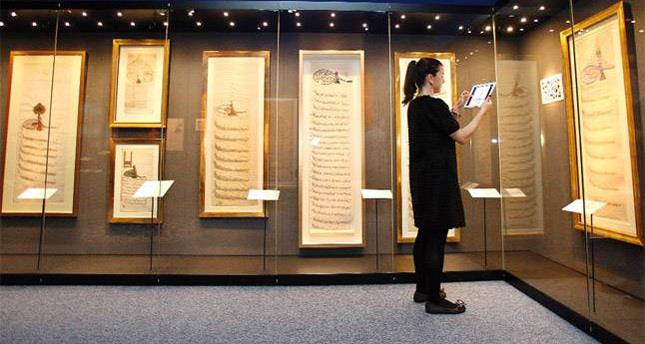Islamic Calligraphy Collection at Sabanci Museum

The exhibition of the Arts of the Book and Calligraphy at Sakıp Sabancı Museum (SSM), which features over 200 works of well-known calligraphers and book artists from the 14th to the 20th century, consists of illuminated Qurans, prayer books, calligraphic compositions, albums and panels written by well-known calligraphers, illuminated official documents bearing the imperial cipher of the Ottoman sultans, as well as calligraphers' tools.
The collections and archives of SSM have been transferred onto a digital platform, the rare manuscripts of Islamic arts can be studied page by page, the Daily Sabah reported.
Visitors are able to access these applications with iPads given to them for use by the museum.
A Quran copied by Abdullah Herevî in 1441-42, probably in Samarkand, and a 20-page Quran section dated circa 1440, probably copied in Bursa, are among the earliest data-x-items in the collection.
Another outstanding Quran dated circa 1500 is illuminated in the palace style. An En'am-ı Şerif consisting of selected surahs from the Quran in muhakkak and nesih scripts is an example of Abdullah Amasi's (d. after 1492) calligraphic style, which was to exert a strong influence on future Ottoman calligraphy.
The 19th century works in the collection also include a Quran with calligraphy by Mehmed Şevki (d. 1887), dated 1862-63 and illumination by Hüseyin; a Quran copied by Ahmed Ârif (d. 1909) and illuminated by Derviş; a Quran copied by Mehmed Hilmi (d. after 1869) and illuminated by Hüseyin Hüsnü; an En'am-ı Şerif illuminated by Seyyid Ahmed; and a collection of surahs illuminated in Turkish rococo style by Ahmed Zihnî and probably also bound by him. Richly-decorated murakkas (calligraphic albums) were produced during this period.



